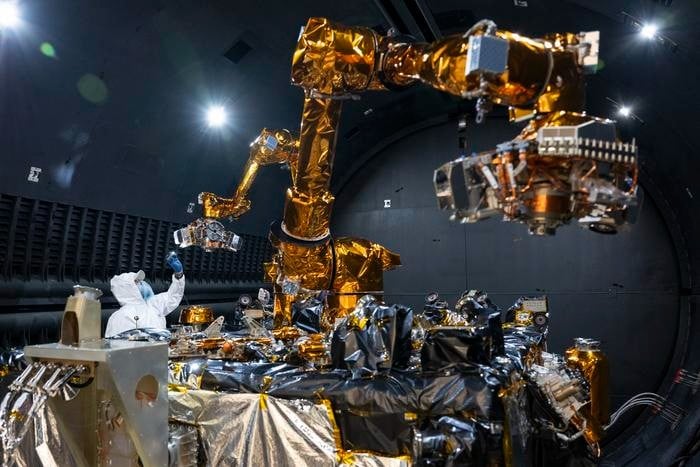Summary: The U.S. Naval Research Laboratory has completed development of a robotic system capable of servicing satellites 22,000 miles above Earth. This technology could transform space operations by enabling in-orbit repairs and upgrades of satellites, potentially saving billions in replacement costs and extending satellite lifespans.
Naval Research Laboratory Announcement, October 8, 2024 | Reading time: 4 minutes
For the first time, satellites could receive the same maintenance and upgrades that other military equipment routinely gets, thanks to a new robotic system developed by the U.S. Naval Research Laboratory (NRL). The technology recently completed its final testing phase, marking a significant advance in space infrastructure maintenance.
A Mechanic’s Shop in Space
“The military regularly fixes aircraft, tanks, ships, and trucks that break. We upgrade aircraft and ships with the latest radars, computers, and engines,” explains Glen Henshaw, NRL senior scientist. “Satellites are the only expensive equipment we buy that can’t be repaired or upgraded once they are in the field, and this costs the taxpayer money.”
The Robotic Servicing of Geosynchronous Satellites (RSGS) system aims to change this situation. Located in geosynchronous orbit approximately 22,000 miles above Earth, these satellites serve crucial military, government, and commercial communications roles.
Testing for Space Conditions
The system underwent rigorous thermal vacuum testing, simulating the extreme conditions it will face in space. Engineers tested all components, including avionics, cameras, lights, and two robotic arms capable of performing various maintenance tasks.
“NRL’s Team RSGS has spent nearly 10 years focused on the goal of completing this first of a kind, robotic servicing payload,” notes William Vincent, NRL RSGS program manager. The system is scheduled for launch in 2026.
Glossary of Terms
- Geosynchronous Orbit: An orbit 22,000 miles above Earth where satellites match Earth’s rotation
- Thermal Vacuum Testing: Testing equipment under space-like temperature and pressure conditions
- Avionics: Electronic systems used on spacecraft
- Spaceflight Hardware: Equipment designed and certified for use in space
Test Your Knowledge
How far above Earth are geosynchronous satellites positioned?
Approximately 22,000 miles
When is the RSGS system scheduled for launch?
2026
How many robotic arms does the system have?
Two robotic arms
How long has the NRL team been working on this project?
Nearly 10 years
Enjoy this story? Get our newsletter! https://scienceblog.substack.com/
If our reporting has informed or inspired you, please consider making a donation. Every contribution, no matter the size, empowers us to continue delivering accurate, engaging, and trustworthy science and medical news. Independent journalism requires time, effort, and resources—your support ensures we can keep uncovering the stories that matter most to you.
Join us in making knowledge accessible and impactful. Thank you for standing with us!

